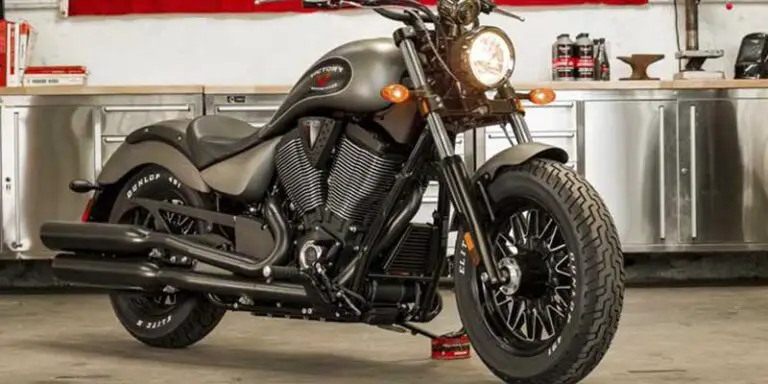Victory Motorcycles have been a part of the motorcycle industry for over two decades now. Though its last plant closed down about 5 years back, plenty of Victory motorcycles are still doing their rounds in the market. A new generation of Victory’s cruisers debuted in 2013 with the release of the Victory Gunner bike. In the most recent array of cruiser-style motorcycles now available on the market, this cruiser style motorcycle dominates the competition. Even after production of Victory Motorcycles ceased, some dealerships are still providing owners with service and warranty coverage on a limited basis. However, such spare parts for such Victory vehicles are not easily available in many areas which makes it difficult to get your hands on one.
Manufacturer of the Victory Motorcycle
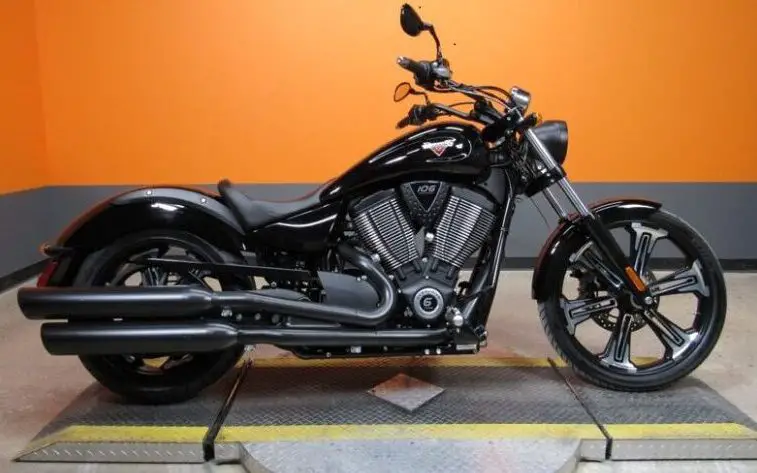
Victory Motorcycles were manufactured by the company Polaris Industries which still has many other brands under its belt, including Indian Motorcycles. The company introduced Victory Motorcycles in 1998. This motorcycle brand was specifically designed for the US market and was sold through a number of dealerships within the country. Victory Motorcycles is a relatively new motorcycle brand when compared to previous ones including Indian Motorcycles. However, it managed to make a lasting impression on the contemporary motorcycle market.
The motorcycle was in direct competition with Harley Davidson Motorcycles. They were known for their sporty look and low price. Victory modified the front and rear spring rates and damping to enhance ride quality by making use of the cartridge forks’ greater tuning capacity. They not only compete with Harley Davidson brand but also gave them tough competition and helped the motorcycle industry as a whole to grow during those times.
Victory had respectable sales. However, in 2011, the parent company Polaris Industries bought the Indian Motorcycle name rights. Thus, Polaris became the owner of both Victory and the Indian Motorcycle brand. Only a 2017 variant, the Victory Octane, shares 35% of its components with the Indian Scout. Polaris decided to shut down the production of these motorcycles as they weren’t able to recover from the economic downturn that struck the United States. Consequently, all showrooms stopped selling new motorcycles, and existing motorcycles were sold through fleets. However, many dealerships continue to sell used and even rebuilt parts on a limited basis.
The Models of Victory Motorcycle
The Victory engine debuted with single overhead cams, twin connecting rods, hydraulic lifters, five speed transmissions, fuel injection, and most fuel injection parts are made by GM standard parts. Similar to most automobiles, the 92 cubic inch Victory engine has 6 US quarts (5,700 ml) of oil in the sump. This helps make it dimensionally larger than other motorcycle engines, like Harley-Davidson, which carry oil in tanks but is also meant to reduce the possibility of low-oil damage. In a racing setting, the sheer amount of oil can also hinder engine performance. The EPROM can be programmed to override the ECM’s rev limiter, which has a maximum speed of around 120 mph at 5,500 rpm. Victory engines are air-cooled, and a cooler positioned between the front frame downtubes is used to cool crankcase oil as well. To replace the drive belt or the back wheel, a portion of the rear swingarm can be taken off. The user may simply tweak the V92C engine thanks to its simple design. The V92C, which at the time was the second-largest production motorcycle engine on the market, spurred competition among motorcycle manufacturers to create ever-larger motorcycle engines. Also, it became known as the Classic Cruiser.
For the better part of the last decade, Victory Motorcycles was manufacturing three models; Vision, Hammer, and High Ball. All these models showcased different characteristics and features. Each model had its own fan following with distinctive strengths and weaknesses. Thus, they were all exclusive in their own ways.
Victory Vision
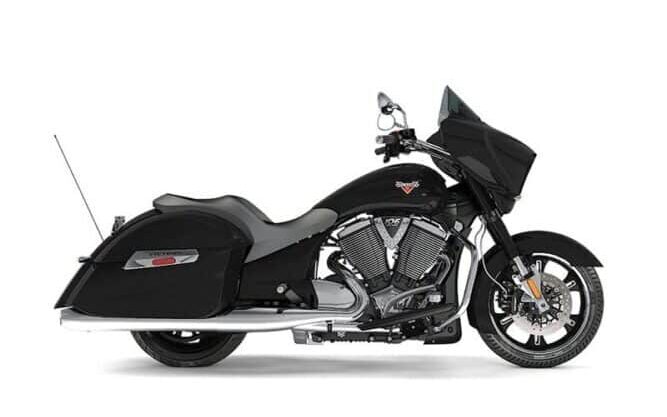
The first model of the Victory motorcycle is known as the vision. With production starting in 1999, this model has been around for about two decades now. Following the historical success of Harley-Davidson, Polaris created Victory. However, the company encountered a weaker than expected market and could not sell satisfactorily. As a result of a lack of wise investment in the brand, a preference for releasing new model years with only cosmetic changes to popular models, and poor investment decisions in electric and three wheeled motorcycles. The age didn’t show on its performance but this Victory bike did make used motorcycles difficult to locate sport bike category but rather occupied its own niche in between.
Thus, though this model was quite popular among motorcyclists around America, it could never reach great heights because of its limited production status. Additionally, victory motorcycle owners who bought a used motorcycle know that these motorcycles are difficult to find especially if they do not want to go past $4000 for their purchase price. This model was inspired by Harley Davidson Street 750 concept bike which made it quite popular among motorcyclists across the globe. The Vision is a touring configuration. While most other manufacturers were trying to chase down the big motorcycle cruiser for their mass appeal, Victory Motorcycles decided to chase after the super nimble motorcycles which made it stand apart as an industry motorcycle manufacturer.
This model was powered by an 8-valve, liquid-cooled engine which made 54 horsepower at 6500 rpm and 65 Nm of torque at 4000 rpm. The motorcycle came with a 5-speed manual transmission system. This Victory bike did not fit into either of the usual categories of motorcycles as it was neither a sports bike nor a cruiser. In fact, it had a superb power-to-weight ratio for making quick turns and also delivered great fuel economy which made it popular among victory riders who didn’t want a lot of fumes coming out of their motorcycle.
Victory Hammer
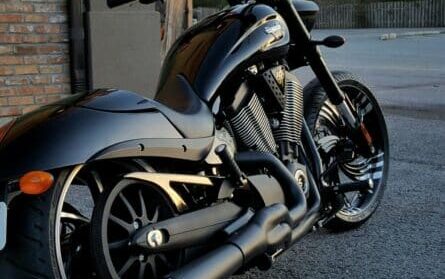
The second model to come out from Victory Motorcycles was called the hammer. This model is regarded as Victory’s Muscle Cruisers and known for its American racing heritage and has been quite successful in many racing events around America since its release. It was launched in 2000 and stayed with the company till 2008 before production ceased due to falling demand as new models came into markets such as the Indian Scout Sixty and Harley Davidson Sportster Seventy Two. Another variant named Vegas 8 ball was launched in 2016. The stodgy cruiser riders, who frequently ride with the “cruiser face” associated with Harley-Davidson riders, were left aghast by the styling of this new bike. The styling featured swept-back cowls and cargo coverings complementing bold paint schemes of fluorescent or flame.
With this model, they tried to tap into the cruiser market and were one of the best examples of how a company can successfully pull that off. The motorcycle was powered by a 70 degree, 9-valve V twin engine which produced 69 horsepower at 5750 rpm and 91 Nm of torque at 4100 rpm.
This model also came with 5-speed manual transmission system but lacked in the power department when compared to the Harley Davidson Forty-Eight model. However, it was very successful due to its stylish look, lightweight, and simplicity which made life easy for many motorcyclists around America.
Victory High Ball
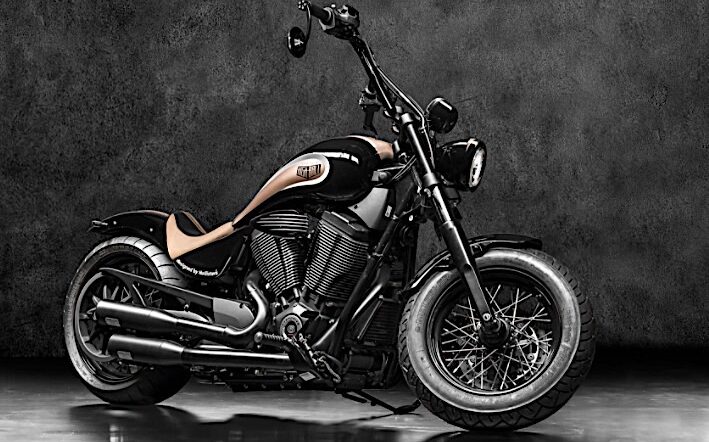
The third bike from Victory is known as High Ball. This bike is a naked streetfighter model introduced in 2009 with production ending in 2015. However, it still remains very popular among the fans of Victory touring bikes and there is a huge demand for used High Ball motorcycles as well. Polaris decided to concentrate its design, research, and manufacturing resources on the memorable Indian brand instead after realizing how much more well-known it was.
Two options become available for 2014. Judge cast alloy wheels were included with the custom paint schemes of suede black and white. And keeping the wire wheels, a fresh paint scheme of suede black with red flames appeared.
This model was muscle car-inspired styling powered by a 71 degree, liquid-cooled V twin engine which produced 76 horsepower at 6250 rpm and 113 Nm of torque at 3400 rpm. It also featured a 6-speed manual transmission system which made the model quite unique in its class. The motorcycle came with standard ABS brakes along with traction control to make things easy for motorcyclists even in bad weather conditions.
Sellers of the Victory Motorcycles in Today’s Time
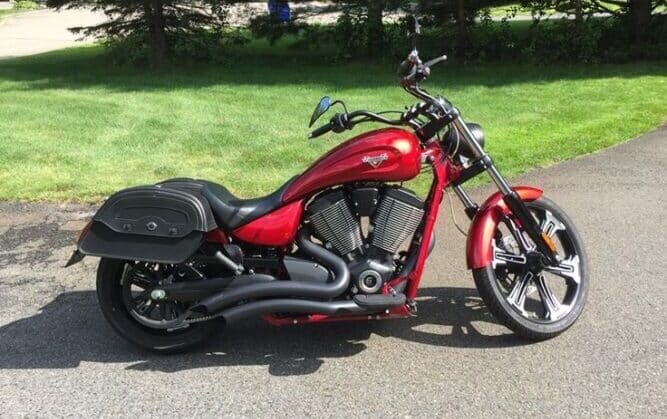
Some of the older dealerships are still dealing with customers who own Victory motorcycles but have no means to service them without proper spare parts. Additionally, some individual sellers may sell used or second-hand models at various online portals that deal with such victory bikes. However, it is difficult to determine whether these are genuine units or not unless they come from an authorized dealership.
When Victory decided to produce motorcycles, it opted to market it as its own company and to sell independently.
Conclusion
As we discussed in this motorcycle blog, the motorcycle industry has seen many great moments of innovation since the beginning of time. While Victory Motorcycles may not have been the most popular, it was quite successful in its own right and had a loyal customer base who still have a deep affection for this brand. Also, there is a club of this brand’s motorcycle fans called The Victory Motorcycle Club. It was founded in 1998 by a number of motorcycle owners of this brand as an autonomous, not-for-profit organization. If you are planning to buy a Victory motorcycle, then talk to some of the local dealerships and see if they have any units in stock. Most importantly – happy riding!

